William H. Houlton Conservation Area
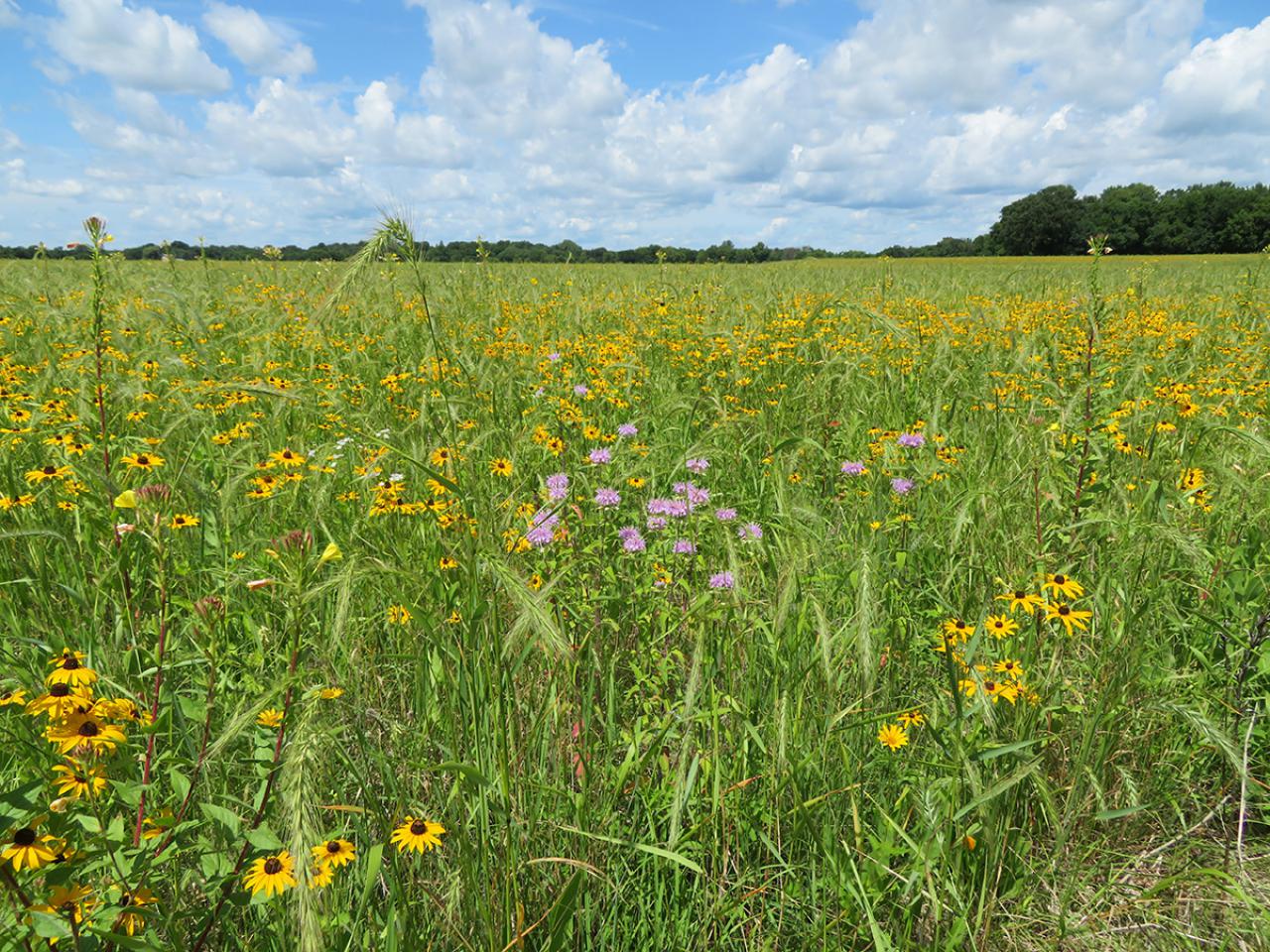
At William H. Houlton Conservation Area — one of the largest undeveloped riverfront properties in the metro — we're restoring 160 acres of soybean field and grazed grasslands into prairie and oak savanna, plus stewarding over 150 acres of upland and floodplain forest at the confluence of the Elk and Mississippi rivers. (Photo by Chris Smith)
Where is William H. Houlton Conservation Area?
William H. Houlton Conservation Area is a 335-acre city-owned park in Elk River at the confluence of the Mississippi and Elk rivers. Along with the adjacent Bailey Point Nature Preserve, it's the northernmost restoration project FMR manages. It's also one of our biggest projects.
The public is welcome to visit William H. Houlton Conservation Area. See the City of Elk River's website for more info.
Our work here takes place on Indigenous homelands.
What’s special about William H. Houlton Conservation Area?
In 2014 when it went up for sale, the farm that would become William H. Houlton Conservation Area was one of the largest undeveloped family-owned riverfront properties in the metro area from Elk River to Hastings. Its 335 acres had been a family farm for well over 100 years.
Throughout the past century, soy and corn grew on much of the property. In fact, soybean fields ran right up to the riverbanks. Cattle and horses grazed the grasslands and forested areas.
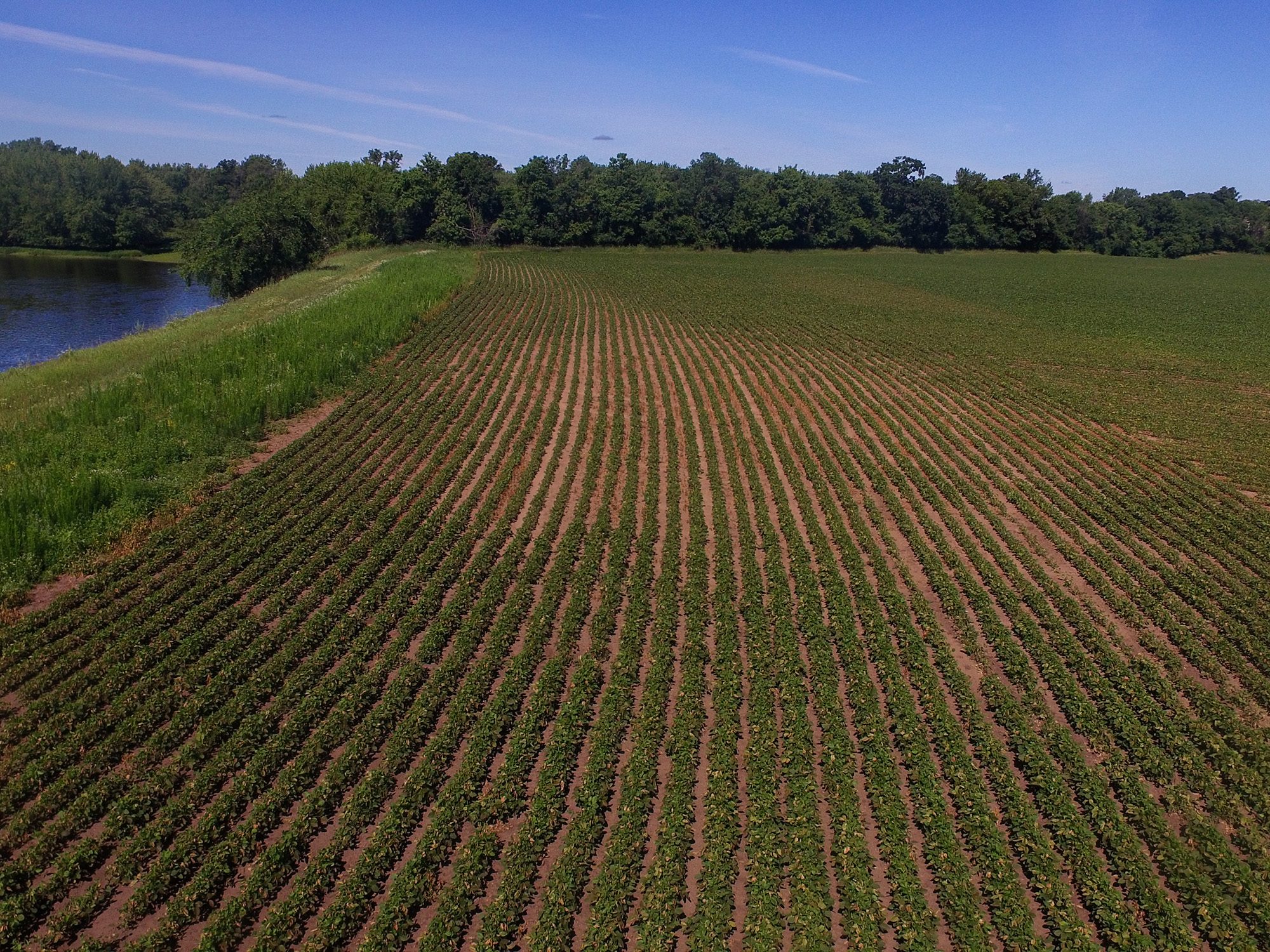
Soybean fields covered much of the riverfront property at William H. Houlton Conservation Area until 2016. (Photo by Tom Reiter)
But the family had a different vision for the land's future. Rather than being sold for development, these hundreds of acres right at the confluence of two rivers could be protected instead for wildlife and public enjoyment. And thanks to a collaborative conservation effort, we've realized the dream of long-term transformation of agricultural lands into native habitat.
If you visit today, instead of row crops, you might see diverse prairie habitat full of blooming milkweed, bergamot, coneflower, lupine, leadplant and goldenrod. You may also encounter some of the myriad wildlife species whose populations are starting to rebound at the property, including bumblebees, monarch butterflies, prairie skinks, dickcissels, savanna sparrows, Henslow's sparrows, frogs and a healthy complement of coyote, fox, turkey and deer.
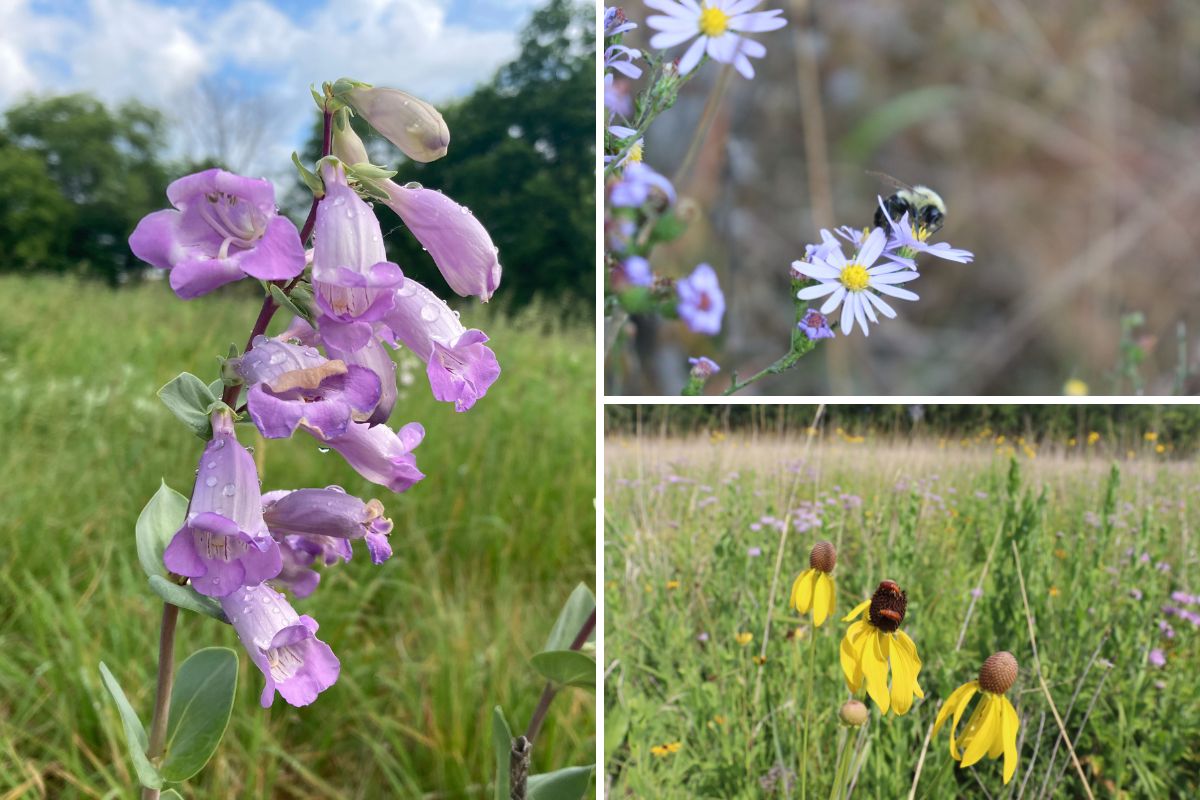
Penstemon, aster and gray-headed coneflower attract pollinators at William H. Houlton Conservation Area. (Photos by FMR and Kiley Friedrich)
Our work at William H. Houlton Conservation Area
Protection of the property
FMR worked with partners and the City of Elk River for some time to protect this important riverfront property. In December 2015, after FMR convened interested organizations and worked to identify funding for the project, the Trust for Public Land was able to purchase the property and transferred ownership to the City of Elk River. Funding came from the Outdoor Heritage Fund as recommended by the Lessard-Sams Outdoor Heritage Council and the U.S. Fish and Wildlife Service. The newly named William H. Houlton Conservation Area opened to the public less than a year later.
Prairie and oak savanna restoration
Since its protection, FMR has partnered with the city to plan and lead the restoration of these former farm fields and forests to high-quality habitat. With our management plan as a guide, and with multiple grants we've secured from the Outdoor Heritage Fund, we've been working ever since to control invasive trees, shrubs and herbaceous plants; restore the floodplain forest; reintroduce historical wetlands; and transform what used to be 160 acres of cropland and 20 acres of degraded grassland back into native prairie and oak savanna.
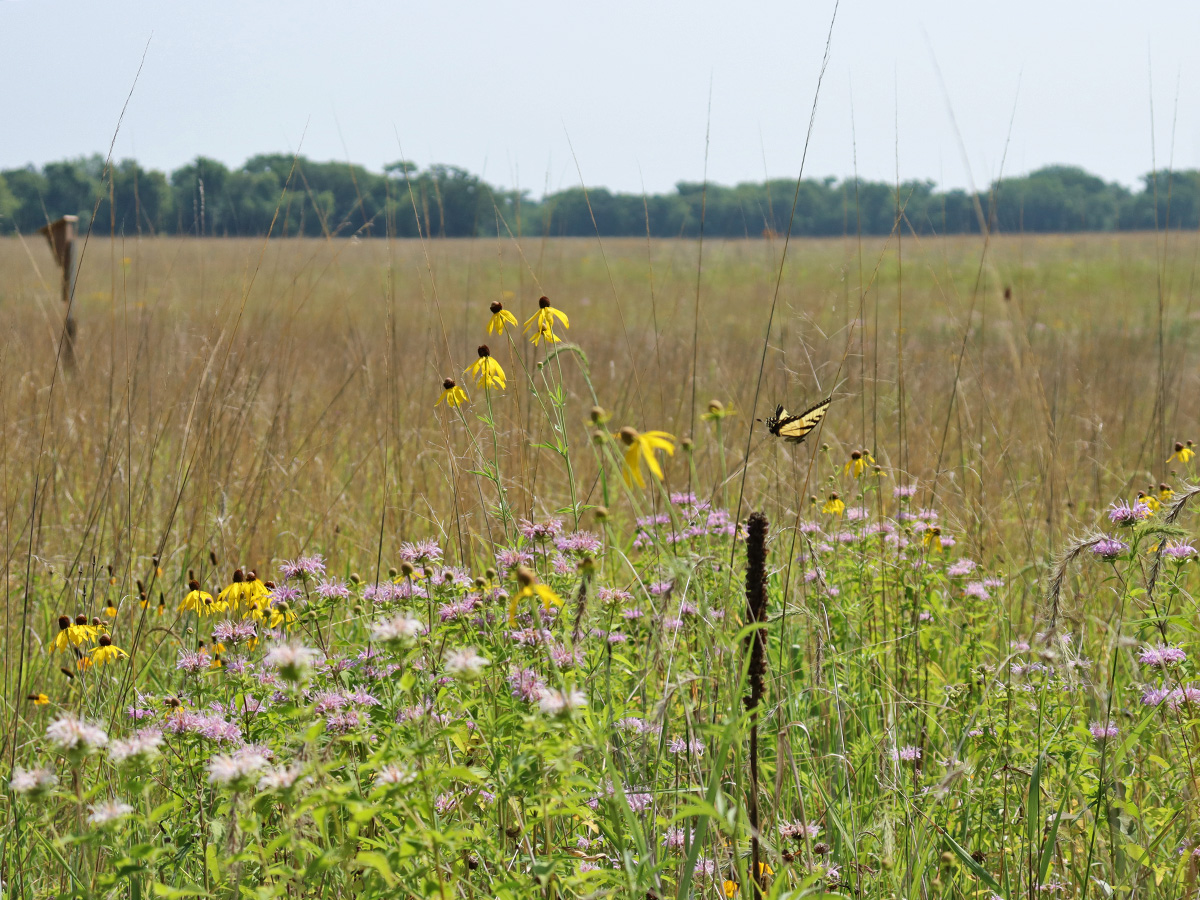
Gray-headed coneflower and bergamot attract a swallowtail butterfly in the 160-acre prairie. (Photo by Kiley Friedrich)
In 2018, the former fields bloomed into prairie for the first time in over 100 years. With their deeper roots, prairie plants help retain and filter water, decreasing runoff pollution and erosion entering the Mississippi River. In fact, using soil models, we've estimated that this restoration has decreased sediment loss into the river by over 1.3 tons per year! Restoring this much land from monoculture to diverse habitat benefits soil health, water quality and wildlife.
In 2020 and 2021, with the prairie finally established, we embarked on returning fire, one of the important historical disturbance regimes that maintained prairies and savannas to the site. We burned half of the site each year, leaving abundant refugia for the site's reestablishing insect and wildlife populations. Going forward, we plan to burn the site once every three to five years. See a 2.5-minute tour of a prescribed burn at William H. Houlton Conservation Area, including what the sweeping fire looks like from the sky.
Wetland and floodplain forest restoration
We've also worked to restore historical wetlands and the current floodplain forest at the edge of the property. We partnered with the U.S. Fish and Wildlife Service to identify historical wetland soils at the site and removed up to two feet of soil that had filled these basins over decades of agricultural use. After seeding these wetlands with native wetland seed mixes, we saw an abundance of life return to these areas, including turtles, frogs and herons.
In the forests, we removed abundant buckthorn that had crowded out native shrubs and understory plants until it was the only thing left. Now, the open understories are regenerating with native species, many from the thousands of pounds of native seed that we've added at the site. These species provide resources for wildlife as well as competition for future buckthorn seedlings.
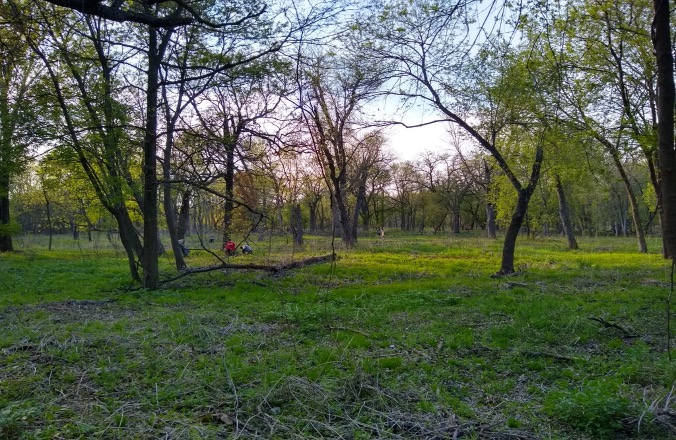
This open forest used to be full of buckthorn. Now, thanks to our buckthorn removal and native plant reseeding efforts, a more diverse plant community can thrive.
Measuring our success and working with the community
Starting in 2016, Elk River High School’s AP Biology class has helped to guide the restoration of the property. Students have collected data on plants, animals, water quality and other research topics. They report back to FMR to help us plan and track the effects of our work. FMR ecologists and our wildlife consultants, along with local Elk River High School students, have found reptiles, amphibians and pollinator species that need this newly blooming prairie and restored wetland to survive, including many rare and threatened species.
And since our restoration began, we've been conducting annual pollinator and bird surveys to track the restoration's effects on wildlife. The results are encouraging. Year after year, we've seen increases in pollinator and bird diversity and abundance at the site, as well as the return of imperiled species such as the yellow bumblebee, Henslow's sparrow and dickcissels. Curious what else we've found? Check out our results from wildlife monitoring and research projects at William H. Houlton Conservation Area and other restoration sites.
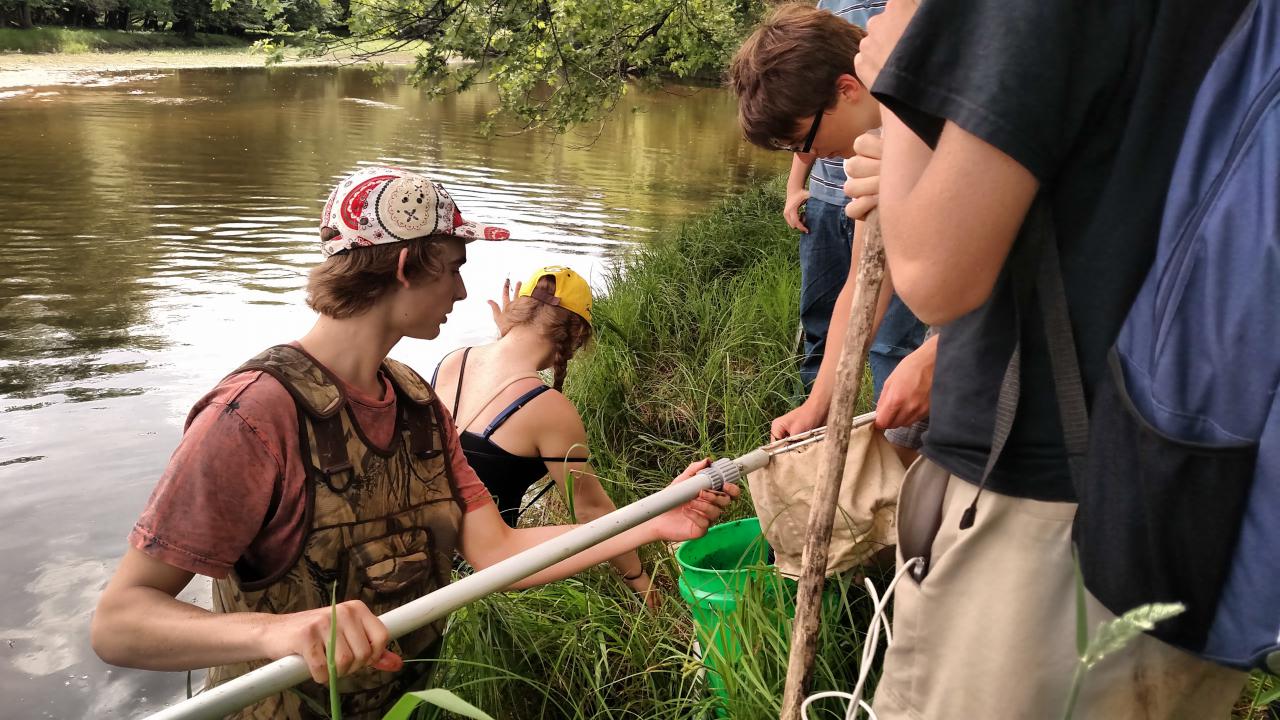
Elk River High School’s AP Biology class has been helping to guide the restoration by collecting data to help us track the results of our work.
We're also proud to have helped establish another friends group: Friends of the William H. Houlton Conservation Area, a growing group of dedicated volunteers that maintains the property alongside the city and our regular FMR volunteers.
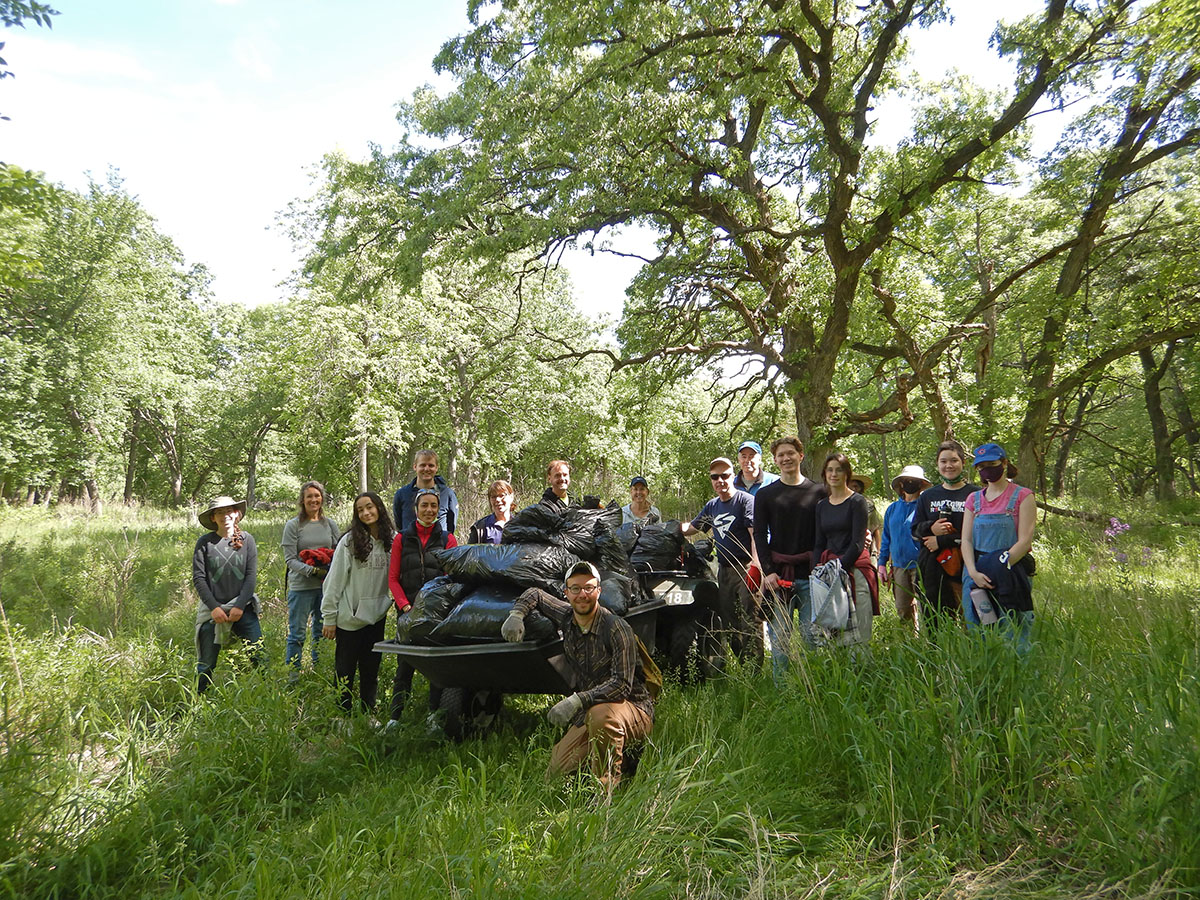
Thanks to all the volunteers who have helped restore William H. Houlton Conservation Area!
Find out more and get involved
- See the results of our wildlife monitoring at William H. Houlton Conservation Area.
- Visit other prairie wonderlands or great spring birding spots in the Twin Cities.
- Find out about prairie skinks and why they need places like William H. Houlton Conservation Area.
- Learn why ecological restoration doesn't happen overnight.
- Volunteer with us to restore places like this.
- Contact FMR project lead Laura Domyancich-Lee.
Partners and funders for our work at William H. Houlton Conservation Area
This work is made possible by 3M Foundation, BNSF Foundation, the City of Elk River, Connexus Energy, the Friends of the WHHCA, the Outdoor Heritage Fund, RBC Wealth Management, the Three Rivers Community Foundation, Xcel Energy and our generous donors like you!
Where we work
FMR maintains over three dozen habitat restoration and land protection sites in the metro area.